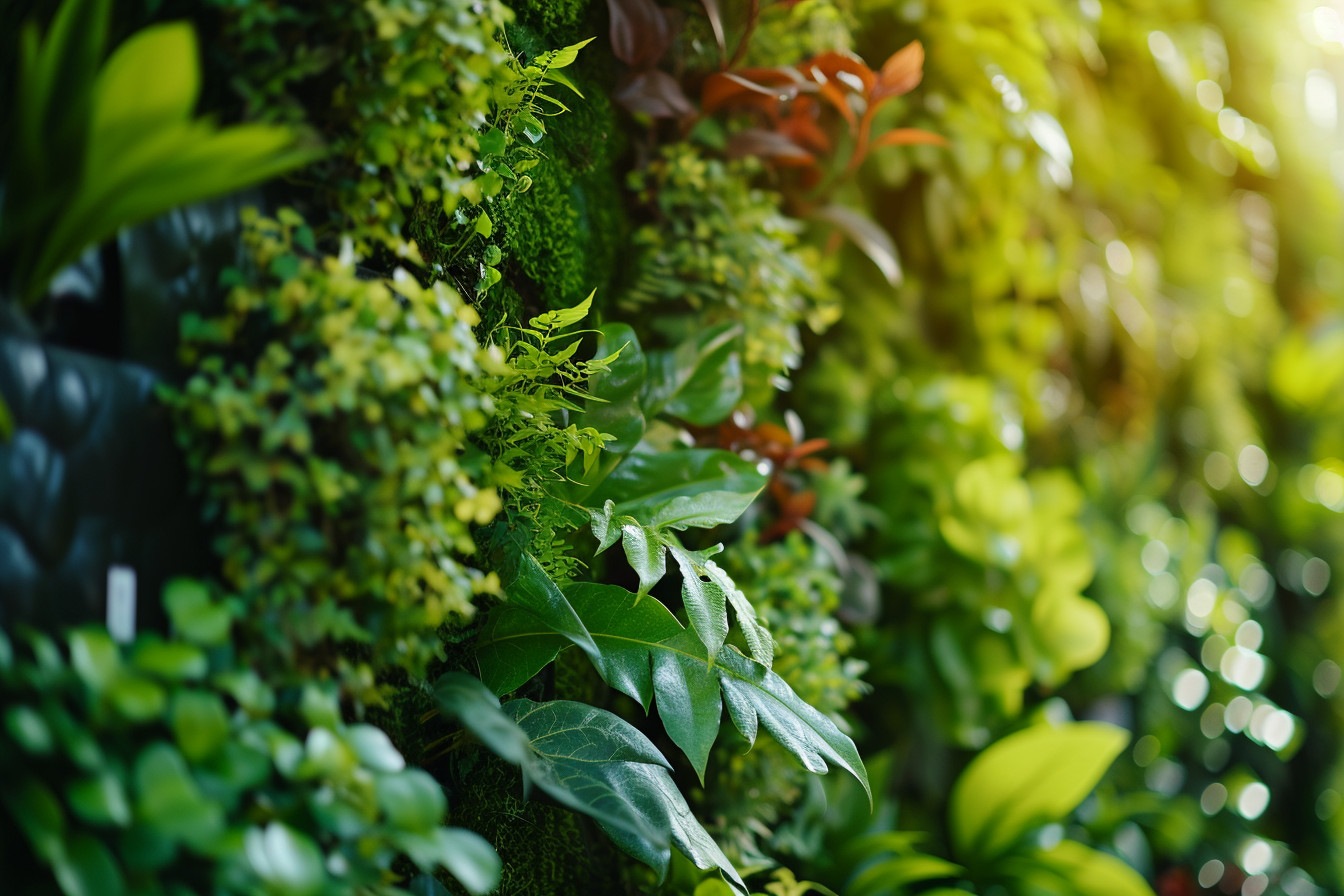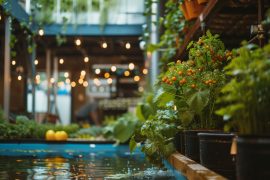So let’s talk about vertical garden design and how we can weave in the magic of recycled materials to not just beautify our spaces but also do a solid favor for Mother Earth. It seems like every day I stumble upon something new that reaffirms my love for squeezing gardening into urban settings, especially when it lets us upcycle stuff that might otherwise end up as waste. Talking plants climbing on old ladders or herbs blooming from tin cans hanging off your balcony rail, there’s an undeniable charm and eco-friendliness crammed into vertical gardens.
I’ve always believed that connecting with nature shouldn’t be confined by the amount of ground space you have available—making vertical gardens variable lifesavers (or should I say space-savers’?) for city dwellers craving greenery. By incorporating items destined for recycling bins or landfills—think plastic bottles turned plant containers—we’re hitting two birds with one stone: creating lush living walls bursting at their seams while significantly reducing waste.
Types of Recycled Materials for Vertical Gardens
Stepping into the world of vertical gardens, we’re not just giving our spaces a green makeover; we’re stepping closer to nature and creating something truly serene. What makes this journey even more special is incorporating recycled materials—an act that’s as kind to our planet as it is creative. Let’s dive in and explore some eco-friendly warriors you can recruit from your recycling bin.
One person’s trash could be another’s trellis! Plastic bottles are gold mines when it comes to DIY vertical gardening projects. Cut them horizontally or vertically, fill ’em up with soil, plant some herbs or succulents, and voilà, you’ve got yourself an impressive wall garden that barely costs a penny. It’s fascinating how these plastic containers metamorphose into thriving ecosystems right before your eyes—proof that beauty often lies in simplicity.
Don’t overlook those wooden pallets either—they have ‘vertical garden’ written all over them (metaphorically speaking). A touch of creativity transforms these humble structures into stunning plant displays, plus they offer ample space for a variety of plants without eating too much real estate on your balcony or backyard curtain walling system—it’s like hitting two birds with one stone!
DIY Techniques for Creating Vertical Gardens with Recycled Materials
Tapping into the serenity of gardening, especially through vertical gardens, not only beautifies spaces but also reconnects us with nature in a harmonious way. What’s even more enriching is incorporating recycled materials into these green sanctuaries. Imagine breathing new life into items that would otherwise clutter landfills; it’s rewarding on so many levels.
First off, let me tell you about building structures out of old pallets; they make fantastic frames for your vertical garden. Not too long ago, I stumbled upon several discarded ones behind a local grocery store (pro tip: always ask permission before taking them). With some basic cleanup and maybe a coat or two of non-toxic paint to spruce them up, voila! You’ve got yourself an eco-friendly canvas ready to host an array of plants.
Plastic bottles are another treasure trove when it comes to recycling. Did you know that each year Americans throw away 35 billion plastic water bottles? Well, how about we slash that number by converting some into planters? Clean ’em out, cut holes big enough for small plants or herbs, then secure them along sturdy wires attached vertically against any wall space hungry for zest and coloration—balcony guardrails work wonders here!
Another ingenious method involves utilizing fabric shoe organizers—yyes those over-the-door kind designed originally to showcase footwear collections can now display splendid varieties of succulent foliage without eating precious floor area.
Lastly, consider making mosaic murals. broken ceramic pots, and unused CDs These vibrant works of art have double light-reflective surfaces, elevating aesthetic appeal, engaging sustainably, and creating an environment supportive of flora and fauna alike. Just picture the morning sun painting glimmers across dew-kissed leaves. startlingly beautiful engineered entirely creative reimagining mundane objects story dramatic transformation peaceful enclave hidden nooks of our cities towns beckon quiet contemplative moments amongst the hustle and bustle of everyday life.
Maintenance Tips for Vertical Gardens with Recycled Materials
Creating a vertical garden using recycled materials isn’t just about giving these items a second life; it’s also about embracing sustainability while cultivating beauty and tranquility. But to ensure your lush wall stays healthy and vibrant, regular maintenance is key. Here are some practical tips I’ve gathered through my journey that will help you sustain your green masterpiece.
First off, monitoring water distribution requires extra attention in vertical gardens—gravity has its own set of rules here! Unlike traditional horizontal beds, where watering can be more intuitive, vertical setups often involve irrigation systems or manual methods tailored to the plants’ needs at various heights.
It might surprise you, but setting up a drip irrigation system made from old hoses or repurposed drink bottles not only reduces waste but also ensures each plant gets its fair share of hydration without fuss.
Now let’s talk soil—your growing medium matters big time when working with reused containers like plastic bottles or shoe organizers turned into planter pockets. These innovative solutions need nutrient-rich soil since they’ll hold less earth than standard pots do. A mix designed for container gardening works wonders; blend compost within for an enriched environment, encouraging robust growth among herbs and veggies alike, hugging your walls vertically!
Pest management takes on unique challenges too, because, guess what? Bugs love climbing as much as our leafy friends do, reaching toward the sun! Keep an eye out for any signs of distress signaling unwelcome visitors making their move upward bound by regularly inspecting both sides (yes, backside checks matter). hanging modules, if applicable.
Finnish off unwanted guests naturally when possible, employing neem oil sprays, which are effectively gentle yet tough contenders against common nuisances.
Final Thought
Wrapping up our journey through the lush greenery of vertical gardens, let’s take a moment to soak in what we’ve covered. I’m pretty stoked about how incorporating recycled materials not only boosts the eco-friendliness of these projects but also adds so much character and story to our spaces.
First off, diving into this world has shown me that anyone can start their own slice of nature regardless of space constraints. It’s been enlightening to learn just how flexible and creative you can get with items that otherwise might have ended up in landfills. From plastic bottles turned planters to old wooden pallets reborn as garden frames, it really opened my eyes.
One thing’s for sure: creating these living walls does more than beautify an area; it contributes significantly towards making urban areas breathable again while giving us hobbyists something serene yet stimulating to dive into (sans pause). And who would’ve thought—you’re actually biting away at your carbon footprint by reusing stuff bound for waste!







